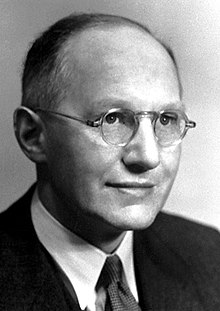Our website is made possible by displaying online advertisements to our visitors.
Please consider supporting us by disabling your ad blocker.
Ernest Walton
Ernest Walton | |
|---|---|
 Walton in 1951 | |
| Born | Ernest Thomas Sinton Walton 6 October 1903 |
| Died | 25 June 1995 (aged 91) Belfast, Northern Ireland |
| Resting place | Dean's Grange Cemetery, Deansgrange |
| Alma mater | Trinity College Dublin Trinity College, Cambridge (PhD) |
| Known for | First disintegration of an atomic nucleus by artificially accelerated protons ("splitting the atom") |
| Spouse |
Winifred Wilson (m. 1934) |
| Children | 4 |
| Awards |
|
| Scientific career | |
| Fields | Physics |
| Institutions |
|
| Doctoral advisor | Ernest Rutherford |
| 18th Erasmus Smith's Professor of Natural and Experimental Philosophy | |
| In office 1946–1974 | |
| Preceded by | Robert Ditchburn |
| Succeeded by | Brian Henderson |
| Signature | |
Ernest Thomas Sinton Walton (6 October 1903 – 25 June 1995) was an Irish physicist and Nobel laureate in Physics who first split the atom.[1] He is best known for his work with John Cockcroft to construct one of the earliest types of particle accelerator, the Cockcroft–Walton generator. In experiments performed at Cambridge University in the early 1930s using the generator, Walton and Cockcroft became the first team to use a particle beam to transform one element to another. According to their Nobel Prize citation: "Thus, for the first time, a nuclear transmutation was produced by means entirely under human control".[2]
- ^ Cite error: The named reference
irishtimeswas invoked but never defined (see the help page). - ^ "The Nobel Prize in Physics 1951 - Ceremony Speech". NobelPrize.org. Retrieved 1 February 2022.
Previous Page Next Page


